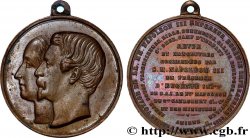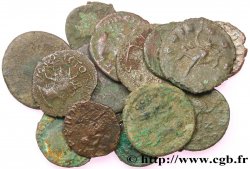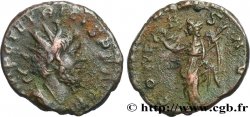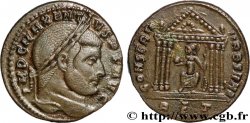fme_683904 - SECOND EMPIRE Médaille pour l’inauguration de Notre-Dame de Fourvière
75.00 €
Количество
Добавить в корзину

Тип Médaille pour l’inauguration de Notre-Dame de Fourvière
Дата: 1852
Монетный двор / Город: 69 - Lyon
Металл: copper
Диаметр: 41,5 mm
Ориентация осей монеты: 12 h.
Гравер PÉNIN Marius (1807-1880)
Вес: 37,39 g.
Век: lisse + main CUIVRE
Пуансон: main indicatrice (1845-1860) et CUIVRE
Комментарии о состоянии
Jolie patine marron avec quelques traces de manipulation dans les champs. Présence de fines rayures
Лицевая сторона
Аверс: легенда: BENEFICIORUM - MEMOR CIVITAS.
Аверс: описание: Statue de Notre Dame de Fourvière, signé : FABISCH INV. et PENON FECIT.
Обратная сторона
Реверс: легенда: INAUGURATION / DE LA STATUE / DE NOTRE DAME / DE FOURVIERE / VIII DECEMBRE / MDCCCLII.
Реверс: Описание: Légende en 6 lignes horizontales ; au-dessus, une croix dans une nuée rayonnante.
Комментарий
Cette médaille signée PENIN FECIT pourrait être attribuée à Marius Penin (1807-1880) ou à son fils Ludovic Penin (1830-1868) juste âgé de 22 ans en 1852.
La basilique Notre-Dame de Fourvière surplombe la ville de Lyon depuis le sommet de la colline de Fourvière.
Elle est construite à peu près sur l'emplacement de l'ancien forum de Trajan Forum vetus, hypothèse étymologique la plus probable pour le nom actuel de Fourvière). Sur cet emplacement est institué au milieu du Moyen Âge un culte à saint Thomas de Cantorbéry puis, rapidement, à la Vierge. Ce double culte se concrétise avec la construction d'un lieu de dévotion, la chapelle Saint-Thomas. À la suite d'un vœu prononcé en 1642 pour éloigner une épidémie de peste de Lyon, un pèlerinage annuel se constitue. Au xixe siècle, une statue de Marie est érigée sur le clocher rehaussé et renforcé de la chapelle et la proposition de construire une basilique est acceptée, à la fois pour accueillir des visiteurs de plus en plus nombreux et en remerciement pour la protection de Lyon durant la guerre franco-allemande de 1870..
This medal signed PENIN FECIT could be attributed to Marius Penin (1807-1880) or to his son Ludovic Penin (1830-1868) who was just 22 years old in 1852. The Basilica of Notre-Dame de Fourvière overlooks the city of Lyon from the top of Fourvière hill. It was built roughly on the site of the ancient forum of Trajan (Forum vetus, the most likely etymological hypothesis for the current name of Fourvière). On this site, a cult of Saint Thomas of Canterbury was established in the middle of the Middle Ages and then, quickly, of the Virgin. This dual cult was concretized with the construction of a place of devotion, the Saint-Thomas chapel. Following a vow made in 1642 to ward off a plague epidemic from Lyon, an annual pilgrimage was established. In the 19th century, a statue of Mary was erected on the raised and reinforced bell tower of the chapel and the proposal to build a basilica was accepted, both to accommodate the increasing number of visitors and in gratitude for the protection of Lyon during the Franco-German War of 1870.
La basilique Notre-Dame de Fourvière surplombe la ville de Lyon depuis le sommet de la colline de Fourvière.
Elle est construite à peu près sur l'emplacement de l'ancien forum de Trajan Forum vetus, hypothèse étymologique la plus probable pour le nom actuel de Fourvière). Sur cet emplacement est institué au milieu du Moyen Âge un culte à saint Thomas de Cantorbéry puis, rapidement, à la Vierge. Ce double culte se concrétise avec la construction d'un lieu de dévotion, la chapelle Saint-Thomas. À la suite d'un vœu prononcé en 1642 pour éloigner une épidémie de peste de Lyon, un pèlerinage annuel se constitue. Au xixe siècle, une statue de Marie est érigée sur le clocher rehaussé et renforcé de la chapelle et la proposition de construire une basilique est acceptée, à la fois pour accueillir des visiteurs de plus en plus nombreux et en remerciement pour la protection de Lyon durant la guerre franco-allemande de 1870..
This medal signed PENIN FECIT could be attributed to Marius Penin (1807-1880) or to his son Ludovic Penin (1830-1868) who was just 22 years old in 1852. The Basilica of Notre-Dame de Fourvière overlooks the city of Lyon from the top of Fourvière hill. It was built roughly on the site of the ancient forum of Trajan (Forum vetus, the most likely etymological hypothesis for the current name of Fourvière). On this site, a cult of Saint Thomas of Canterbury was established in the middle of the Middle Ages and then, quickly, of the Virgin. This dual cult was concretized with the construction of a place of devotion, the Saint-Thomas chapel. Following a vow made in 1642 to ward off a plague epidemic from Lyon, an annual pilgrimage was established. In the 19th century, a statue of Mary was erected on the raised and reinforced bell tower of the chapel and the proposal to build a basilica was accepted, both to accommodate the increasing number of visitors and in gratitude for the protection of Lyon during the Franco-German War of 1870.







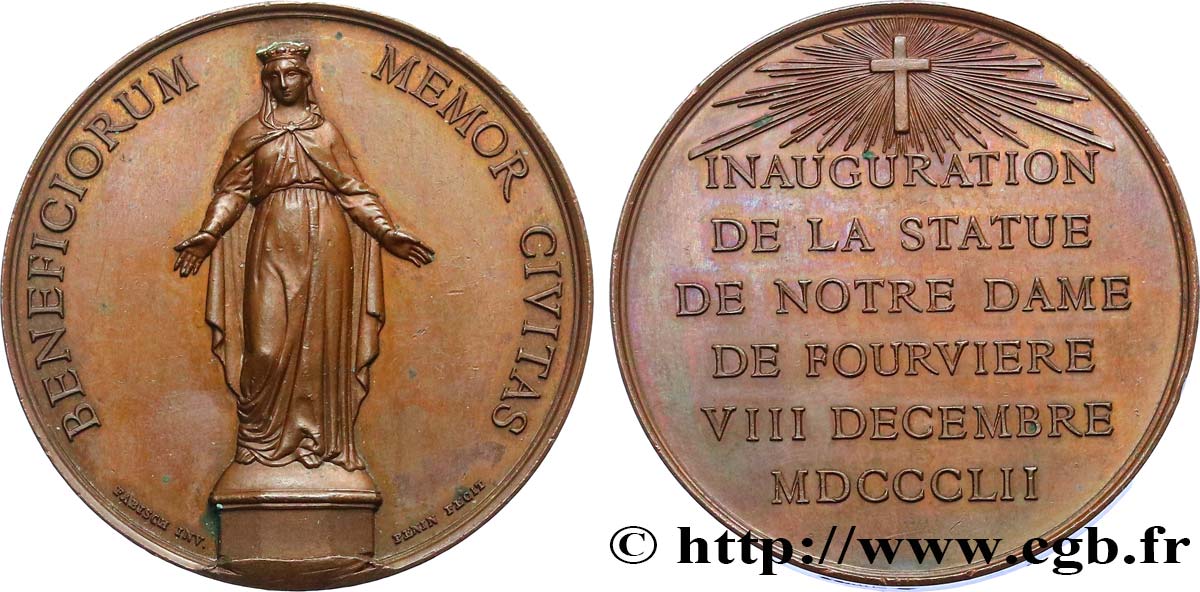
 Cообщить об ошибке
Cообщить об ошибке Распечатать страницу
Распечатать страницу Отправить мой выбор
Отправить мой выбор Задать вопрос
Задать вопрос Consign / sell
Consign / sell
 Информация
Информация
